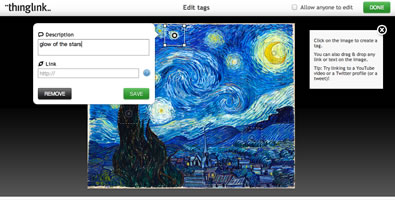 INNOVATE through the Graphic Inquiry
INNOVATE through the Graphic Inquiry
NETS-S 3. Research and Information Fluency
Students apply digital tools to gather, evaluate, and use information.
NETS-S 4. Critical Thinking, Problem Solving, and Decision Making
Students use critical thinking skills to plan and conduct research, manage projects, solve problems, and make informed decisions using appropriate digital tools and resources.
As you work your way through the elements of inquiry, think about how graphic representations can be used for learning, communicating and sharing understandings. Examine Callison's five elements in the visual below.
Before jumping into a topic, teachers often ask students to create a KWL chart. Consider the creation of a visual version of this chart. For instance, provide students with a visual and ask them to label the landforms they know using a tool like Google Docs Drawing (see image above right).
Look online to find diagrams, illustrations, photos, and other images to use in checking prior learning or as part of the inquiry process. For a particular image type, do a Google Images search for your topic such as"landform diagram" or "World War II timeline" or" insect life cycle".
Let's explore five elements of graphic inquiry: questioning, exploration, assimilation, inferences, and reflection.
Questioning
NETS-S 3a. plan strategies to guide inquiry.
NETS-S 4a. identify and define authentic problems and significant questions for investigation.
NETS-S 4b. plan and manage activities to develop a solution or complete a project
Inquiry begins with wonder, watching the world, and creating meaningful questions.
Use images to stimulate questions and visual tools to plan and organize thinking.
Stimulate Questions
 Focus on government image websites to stimulate questioning. You can find many photo collections at FirstGov. The US Government also have a Flickr page. Show photos of working dogs from the border patrol. Why is the dog sniffing grandpa's bag? What are your questions about working animals?
Focus on government image websites to stimulate questioning. You can find many photo collections at FirstGov. The US Government also have a Flickr page. Show photos of working dogs from the border patrol. Why is the dog sniffing grandpa's bag? What are your questions about working animals?
You can also check out image galleries by state. For instance, you might use the State of Oregon images page to show students photos from Oregon farms. Ask students to write questions based on the images.
US Government Resources
- Agriculture Research Service
- Cancer Institute
- CDC Images
- Department of Defense
- EPA Image Gallery
- FEMA
- Fish and Wildlife Photos
- Library of Congress
- NOAA Photo Library - science
- NASA Images
- NIH
- NREL
- USGS Images
- Smithsonian Collections
- Smithsonian Wild
- US Park Service
- US Government Resources - Best Photos
Global Government Resources
Use websites that provide public domain or open use images:
Explore sources for images students can use:
Start at Flickr Creative Commons and Wikimedia Commons. Check out the National Archives collections page.
Check Flickr the Commons for large-scale imaging projects from museums and libraries.
Look for visual kits at KitZu for free visual ideas.
- General Photos
- CalPhotos
- Compfight. General search tool.
- Creative Commons. Searches popular sites for open materials.
- Edupic. Great photos categorized by subject area for teachers.
- Europeana. Searches Europe's cutural collections
- Fotopedia. Search the open area.
- Free Images
- Free Stock Photos
- Images of the World
- NeoK12. Great images by subject area.
- Life. Magazine photos.
- PD Photo
- Pics4Learning - designed for students and teachers
- Clipart
- Clker
- DK Clipart
- OpenClipart. The best place for clipart.
Inquiry Planning
Use collaborative planning walls as a place to organize materials and ideas.
Basic stickywalls provide notes that can contain text, images, video, and links. These notes can be organized.
- Wallwisher. Extremely easy to set-up and use.
- Alternatives
- Corkme
- Edistorm
- Pegby. Sign-in and email confirmation required
- PrimaryWall. Simple stickywall. No signin required. If you sign-in you have more controls. Designed for elementary grades.
Complex stickywalls provide more complex tools and organization of stickynotes and online resources.
- Nota. Create for notes, photos, documents, and lists. You can also collaborate.
- Alternatives
 Activity 1: Browse 3-5 imaging websites. Download a couple images.
Activity 1: Browse 3-5 imaging websites. Download a couple images.
Activity 2: Open a Nota account. Place an image in a project.
Exploration
NETS-S 3b. locate, organize, analyze, evaluate, synthesize, and ethically use information from a variety of sources and media.
After developing questions, students are ready to explore information.
Encourage young people to seek a variety of ways to learn. For example, read the National Geographic What is Geography? comic.
Help students plan strategies that go beyond "Googling." Model the use of electronic databases, government resources, and authoritative websites.
For current posters, do a Google Image search for a topic and add the word "poster" such as nutrition poster or safety poster. You can also look for a time period such as World War 2 posters.
Explore news in a visual way:
 Activity 1: Do a Google Image search for comics and posters related to a topic such as safety.
Activity 1: Do a Google Image search for comics and posters related to a topic such as safety.
Activity 2: Explore visual news resources and design an activity.
Assimilation
NETS-S 3c. evaluate and select information sources and digital tools based on the appropriateness to specific tasks.
NETS-S 4c. collect and analyze data to identify solutions and/or make informed decisions.
Assimilation involves reinforcing and confirming information, as well as rejecting information that doesn't meet needs or belief systems. Involve students to taking notes on visuals, seeking examples, and documenting ideas.
Thinglink is an easy-to-use tool that allows users to create notes and hotlinks on images. It's a great way to critique paintings, reflect on history, or create a visual map. Very easy to sign up and use. You can upload 10 images for free.
Try Thinglink. For ideas, go to 15 Incredible Historical Photos, 13 Photos that Changed the World, 30 Photos that Changed the World, and World's Famous Photos.
Also, try a similar tool, Speaking Image.
 Activity 1: Create a Thinglink or Speaking Image. Create a project, upload an image, and place hot links.
Activity 1: Create a Thinglink or Speaking Image. Create a project, upload an image, and place hot links.
Use the image resources in the Questioning section for ideas.
Inference
NETS-S 3d. process data and report results.
NETS-S 4d. use multiple processes and diverse perspectives to explore alternative solutions.
Student must learn to identify alternative solutions and make decisions based on evidence. Evidence is necessary to support a claim, justify change, or make an informed decision. Students must learn to identify, process, and judge evidence. Arguments provide evidence to support a claim. To develop useful arguments, inquirers must evaluate evidence, examine different points of view, and determine the most logical approach or meaningful conclusion.
Use organizing tools from ReadWriteThink to organize evidence. Try the new Cube Creator.
- Animal Inquiry
- BioCube
- Character Trading Cards
- Circle Plot Diagram
- Compare and Contrast Map
- Drama Map
- Essay Map
- Graphic Map
- KWL Organizer
- Literary Elements Map
- MysteryCube
- Plot Diagram
- ReadWriteThink Webbing Tool
- Story Map
- Timeline
- Venn Diagram (2 Circles)
- Venn Diagram (3 Circles)
Go to DocsTeach at National Archives. Design an activity that involves young people in deep thinking.
 Activity 1: Explore the ReadWriteThink organizers. Try the new Cube Creator.
Activity 1: Explore the ReadWriteThink organizers. Try the new Cube Creator.
Activity 2: Try DocsTeach.
Reflection
Involve students in metacognitive activities. Ask them to think about their thinking regarding technology. Why did they make the choices they did? How did it impact the project? One approach is keeping a timeline or blog of activities throughout the assignment, then go back and reflect on the process. This process aspect may be more important than the content itself!
The traditional approach is to use a blog. Consider adding visual aspects such as screen shots, concept maps, photos of class activities, and other ways to visualize process.
Timeline - What did I do? When did I do it? Why did I do it? How did I feel about it?
- Tikitoki. Provides tools for creating a timeline with text, images, audio, video, and links.
- Alternatives
 Activity 1: Focus on one step in the inquiry process. Think about how students use technology in that step. Brainstorm activities that would address the standard. Focus on one activity and one technology tool or resource for a specific example.
Activity 1: Focus on one step in the inquiry process. Think about how students use technology in that step. Brainstorm activities that would address the standard. Focus on one activity and one technology tool or resource for a specific example.
Activity 2: Add ideas and resources to your timeline.





